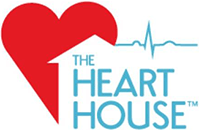Understanding Deep Vein Thrombosis (DVT)
Deep Vein Thrombosis (DVT) is a dangerous condition where blood clots form in the deep veins (more commonly in the legs). If left untreated, DVT can lead to life-threatening complications, such as a pulmonary embolism.
What You Should Know:
DVTs are most likely to form in the leg veins, but they can also develop in the upper arm or upper chest veins. DVTs are also more likely to occur after prolonged periods of inactivity, such as after a long car ride or flight. Individuals with cancer, who are pregnant, or with certain genetic factors may have an increased risk of developing DVT.
Could PAD be Affecting Your Legs?
Take Our Free Online Assessment to Find Out
DVT can share many risk factors that are also associated with peripheral arterial disease (PAD), a common but serious condition where the arteries that carry blood to the arms and legs become narrowed or clogged due to plaque buildup. PAD is often asymptomatic at the onset, so comprehensive screening and intervention are critical to prevent your condition from worsening and putting you at risk for coronary artery disease. Our easy-to-use online self-assessment tool can help determine if you are at risk for PAD and if you should schedule a consultation with one of our dedicated vascular specialists for testing.
Causes & Symptoms of
Deep Vein Thrombosis
Causes of Deep Vein Thrombosis (DVT)
- Prolonged immobilization
- Injury to a vein
- Pregnancy
- Birth control pills or hormone therapy
- Cancer
- Inherited blood clotting disorders
- Older age
- Obesity, smoking, or lack of physical activity
- Heart failure
- Inflammatory diseases
The most characteristic symptoms of DVT include leg swelling, pain, warmth, and discoloration. Shortness of breath, dizziness, and chest pain can occur if a clot breaks off and travels to the lungs.
The most characteristic symptoms of DVT include leg swelling, pain, warmth, and discoloration. Shortness of breath, dizziness, and chest pain can occur if a clot breaks off and travels to the lungs.
Symptoms of Deep Vein Thrombosis (DVT)
- Swelling
One leg may become swollen and larger than the other. This is often the first noticeable symptom. - Pain
There may be tenderness, soreness, redness, and warmth in the affected leg. The pain often starts in the calf. - Skin discoloration
The skin over the area of the clot may appear bluish or reddish. - Visible surface veins
Superficial veins may become dilated and more visible. - Leg fatigue
The affected leg may tire more easily during walking. - Leg warmth
The skin temperature of the leg with DVT is often higher. - Leg cramps
Muscle cramping and tightness in the calf can occur. - Leg numbness or tingling
Numbness or tingling sensations may be felt. - No symptoms
Some DVTs cause no symptoms initially and are found incidentally on testing for other issues.
Testing & Diagnosis Possibilities for Deep Vein Thrombosis
- D-dimer blood test - This looks for breakdown products of a blood clot. A high level indicates a clot may be present, but other conditions can also elevate D-dimer.
- Ultrasound - An ultrasound uses sound waves to create images of the veins in the legs or arms. It can detect blockages and blood clots. This is the primary imaging test used to diagnose DVT.
- Venography - A dye is injected into a vein, and X-rays are taken to visualize blood flow and blockages. This invasive test is not always needed but can help confirm ultrasound findings.
- MRI or CT scan - These imaging tests can also visualize blood clots in the veins. They may be used if a DVT is suspected in other areas like the abdomen.
- Plethysmography - This test measures changes in leg volume in response to blood flow. Swelling may indicate a DVT blood clot.
Treatment Planning for
Deep Vein Thrombosis
The primary goal of treatment is to prevent these clots from causing life-threatening complications while minimizing any possible adverse effects. Treating DVT can also help improve blood flow and minimize long-term damage.
Frontline treatment for DVT often starts with prescribing a blood thinning (anticoagulant) medication to help dissolve the clot over time and prevent new clots from forming. More aggressive treatments, including infusions of more potent blood thinners, may be needed to break up clots that are extremely large.
You may also be asked to wear compression stockings to help improve blood flow and prevent DVT from progressing. Lifestyle changes are often recommended following treatment, such as quitting smoking, maintaining a healthy weight, and staying physically active.
In severe cases, invasive or surgical techniques may be required to treat DVT. Our vascular specialists are highly trained in performing the most advanced procedures for DVT, including thrombectomy, which involves inserting a catheter into the affected vein to remove the clot mechanically.
Photo Gallery
Video Gallery
Testimonials
Photo Gallery
Risks if Left Untreated
Get To Know Our Cardiovascular Specialists
In Search of Care? Request a Consultation Today





